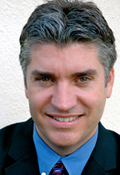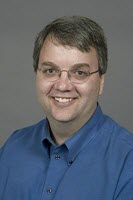 After an exoneration in Illinois in an arson case just last week, Michigan followed it up with one yesterday (thanks to the U. of Michigan Innocence Clinic).
After an exoneration in Illinois in an arson case just last week, Michigan followed it up with one yesterday (thanks to the U. of Michigan Innocence Clinic).
From the Sentinel-Standard:
After spending 26 years in prison, David Gavitt is a free man.
Gavitt, now 53, was convicted in 1986 in the arson deaths of his wife and two daughters. He was serving three life sentences at Carson City Correctional Facility when lawyers and law students from the Michigan Innocence Clinic took on his case three years ago and filed a Motion for Relief from Judgment last fall.
After extensive examination of trial records and the evidence, Ionia County Prosecutor Ron Schafer signed a stipulation and order, acknowledging that Gavitt was entitled to a new trial, that the prosecutor’s office is not going to retry him, and that he should be released from prison.
Chief Circuit Court Judge Suzanne Hoseth-Kreeger ordered that Gavitt’s charges be dismissed, and he was released from prison early Wednesday afternoon.
“We clearly have a lot of questions,” Schafer said. “At best, we have a fire that is undetermined (in origin and cause).”
On March 9, 1985, a fire broke out in the Gavitts’ Jackson Street home in Ionia, trapping Gavitt’s wife and children. Gavitt told police he broke out a window to escape and tried to re-enter the home to save his family.
Gavitt’s wife Angela, 26, and their daughters, 2 1/2-year-old Katrinia and 10-month-old Tracy, died in the blaze. Autopsy results showed that all three victims died of carbon monoxide poisoning from smoke inhalation. Gavitt was hospitalized for injuries he sustained in the fire.
Subsequent investigation at the time determined that the fire was intentionally set using liquid accelerants. Gavitt was arrested and charged with his wife’s and daughters’ murders. He received three life sentences.
Schafer said evidence introduced in Gavitt’s trial to support arson claims was based on “bad science.”
“(That evidence) was reviewed by other experts and our own independent experts, who said there was no evidence of arson,” he said. But that opinion is based on contemporary fire investigation techniques.
“Fire investigation has advanced in the 27 years since this fire,” Schafer wrote in the People’s Response to Gavitt’s motion. Testing of materials today is more sophisticated and the scientific understanding of how fires operate is different from what it was in 1985.
Schafer called the investigation done in 1985 “top-notch,” and the standards used “state of the art.”
“Investigators did an exhaustive review of evidence,” said Schafer. “They went above and beyond the expectations for arson investigators in 1985.”
The science has changed. Today’s arson investigation is based on the NFPA 921, Guide for Fire and Explosion Investigations, published in 1992, seven years after the Gavitt fire was investigated.
Without a laboratory being able to verify that an accelerant was present at the fire, and without the use of modern knowledge of fires and advanced investigation techniques, it can’t be proved that some ignitable liquid, such as gasoline, was used to start the fire, Schafer said. As a result, his office would not be able to charge Gavitt with arson.
“He’s entitled to a new trial, and we can’t try him using today’s standards (applied to yesterday’s evidence),” he said.
“However, this is also a case that, if it was new today, this office would not close,” Schafer wrote in his response to the motion, “There are simply too many questions, questions which may never be answered.”
One Schafer mentioned in his response pertained to possible motive. There was reference to marital problems in reports and testimony from the trial that may or may not have played a role in the fire.
Imran Syed, a staff attorney with the Michigan Innocence Clinic based at the University of Michigan, was a law student when he began working on Gavitt’s case two years ago. Gavitt’s application for the program was received a year earlier.
Michigan Innocence Clinic students work on behalf of prisoners who have new evidence that may exonerate them of crimes for which they have been convicted. The clinic focuses on cases where there is no biological evidence such as DNA to be tested. Gavitt’s exoneration is their first in two and a half years, Syed said.
“Arson convictions are on our radar for possible sources of wrongful conviction, so we gave it a closer look, and it warranted a closer look,” Syed said. “An expert in arson litigation pointed us to a scientist at the forefront of exposing errors made in the old days of arson investigation. David’s case was a classic example of that.”
It became clear over the course of the Michigan Innocence Clinic’s investigation that there was “no way to tell this was arson,” Syed said. “Everything they used against David, we were able to show those things are not true. Low level burning and burn patterns, all those things can appear in a natural fire. This is something the scientific community has learned in the last 20 years.”
The Michigan Innocence Clinic has a very high standard and they vet their cases carefully, Syed said. The lawyers and students understand that not everyone who presents themselves for help is actually innocent.
“We do believe David is innocent, an absolutely innocent person who has been through a terrible ordeal,” Syed said. “But at least we got something of a happy ending. Some people aren’t so lucky.”
Syed credited Schafer for seeing that justice prevailed in Gavitt’s case.
“Fortunately you have a prosecutor who did listen,” he said. “He is a huge reason we were able to get to this point. David gets to go home now, and we are grateful for that.”
Syed said the first thing Gavitt did when he left prison was go to the cemetery where his wife and daughters are buried.
“He needs to go home to unwind and relax, and to grieve,” Syed said. “He did lose his family in that fire.”
Gavitt will live in the west part of Michigan, Syed said. He wants to work and to tell his story – when he is ready.
“For someone in prison for 26 years, he is a well spoken and together person,” Syed said. “Not everyone makes it for 26 years.
“He is certainly the kind of person who can put his life together and move forward.”
“Ultimately, this remains a case in which the lives of three innocent people were taken by a fire that can only be classified as having an undetermined origin and cause,” Schafer wrote in his response.

















